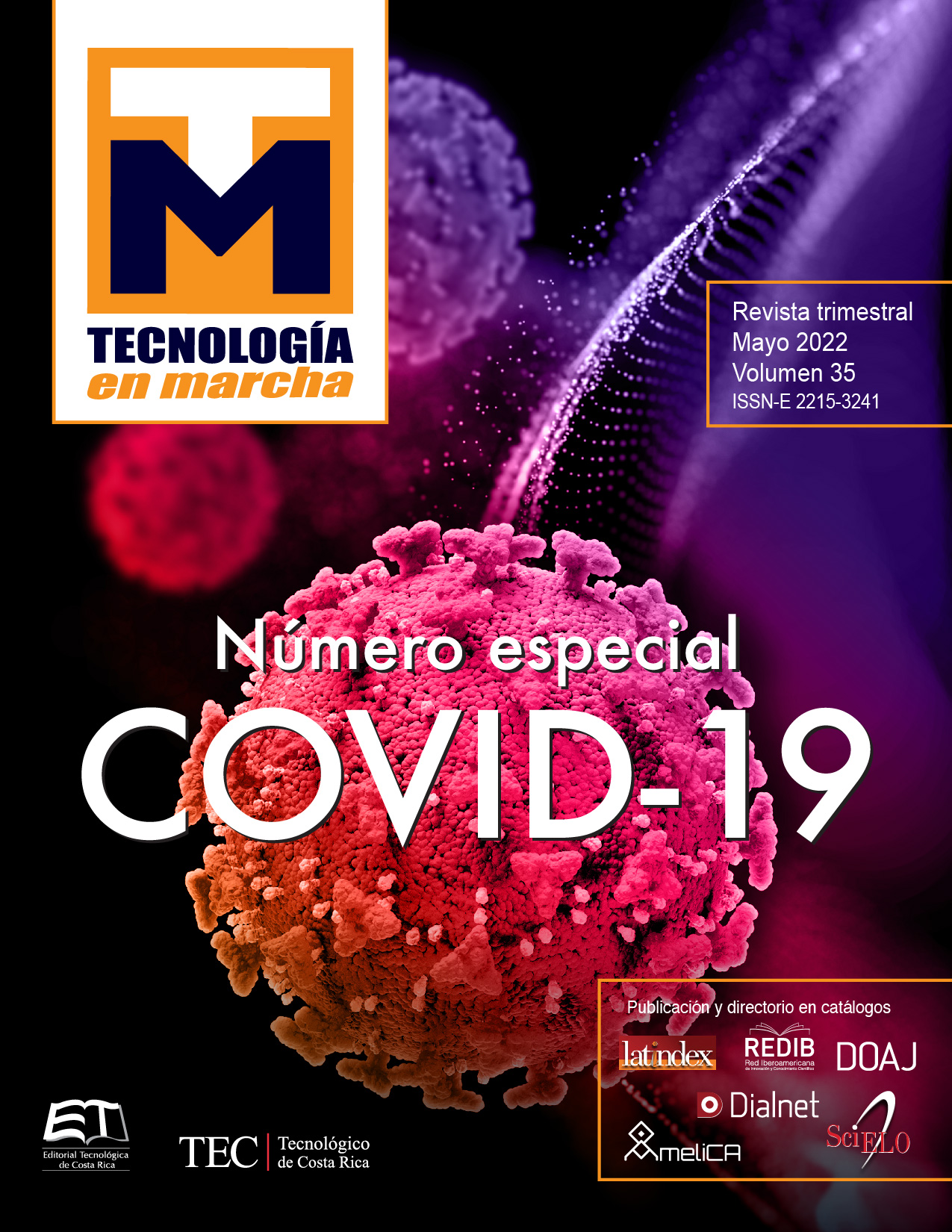AGRINNOVACIÓN 4.0: Methodological classification tool to determine production areas of short-cycle crops
Main Article Content
Abstract
The National Plan for the Improvement of Productivity and Sustainability of the Agricultural Sector aims to be applied in a staggered manner to the entire country, under the name of AGRINNOVACION 4.0 to promote economic recovery and job creation after the COVID-19 pandemic. The objective of this work is to analyze geospatial information of the producers of the AGRINNOVACIÓN 4.0 program using the free Google Earth Engine (GEE) platform, in order to establish the base of the digital agricultural cadastre of the North Zone of Cartago and have a system of geographic information for the application of high-precision technologies, as a basis for the identification model of productive areas with short-cycle crops developed in the North Zone of Cartago. A data acquisition methodology was generated using geographic information systems and machine learning techniques (Random Forest), with good fitting results. For the area under study, it is imperative that the information affected by cloud cover be reduced to make the classification of lands for horticultural use as accurate as possible. The tool is replicable and constitutes a support in the success of the plan for the later stages.
Article Details

This work is licensed under a Creative Commons Attribution-NonCommercial-NoDerivatives 4.0 International License.
Los autores conservan los derechos de autor y ceden a la revista el derecho de la primera publicación y pueda editarlo, reproducirlo, distribuirlo, exhibirlo y comunicarlo en el país y en el extranjero mediante medios impresos y electrónicos. Asimismo, asumen el compromiso sobre cualquier litigio o reclamación relacionada con derechos de propiedad intelectual, exonerando de responsabilidad a la Editorial Tecnológica de Costa Rica. Además, se establece que los autores pueden realizar otros acuerdos contractuales independientes y adicionales para la distribución no exclusiva de la versión del artículo publicado en esta revista (p. ej., incluirlo en un repositorio institucional o publicarlo en un libro) siempre que indiquen claramente que el trabajo se publicó por primera vez en esta revista.
References
MAG, “Comunicado de Prensa AGROINNOVACIÓN 4.0,” 2021. [Online]. Available: https://www.presidencia.go.cr/comunicados/2020/05/con-una-inversion-de-₡4-267-millones-gobierno-impulsa-programa-de-alta-tecnologia-para-sector-agroproductivo/.
Comisión Económica para América latina y el Caribe, “Agro 4.0,” 2021. [Online]. Available: https://www.cepal.org/es/proyectos/agro-40-0.
J. Gaitán-Álvarez, “Evaluación de erosión hídrica en suelos bajo cobertura forestal y agrícola, en la Cuenca del Río Reventazón, Costa Rica,” Instituto Tecnológico de Costa Rica., 2013.
C. Ramírez Vargas and J. Nienhuis, “Cultivo protegido de hortalizas en Costa Rica,” Rev. Tecnol. en Marcha, vol. 25, no. 2, p. 10, Aug. 2012, doi: 10.18845/tm.v25i2.303.
Instituto Nacional de Estadística y Censos, “Encuesta Nacional Agropecuaria 2019: Resultados Generales de la Actividad Agrícola y Forestal.” 2020.
J. Padarian, B. Minasny, and A. B. McBratney, “Using Google’s cloud-based platform for digital soil mapping,” Comput. Geosci., vol. 83, pp. 80–88, Oct. 2015, doi: 10.1016/j.cageo.2015.06.023.
H. Zhang, J. Kang, X. Xu, and L. Zhang, “Accessing the temporal and spectral features in crop type mapping using multi-temporal Sentinel-2 imagery: A case study of Yi’an County, Heilongjiang province, China,” Comput. Electron. Agric., vol. 176, p. 105618, Sep. 2020, doi: 10.1016/j.compag.2020.105618.

